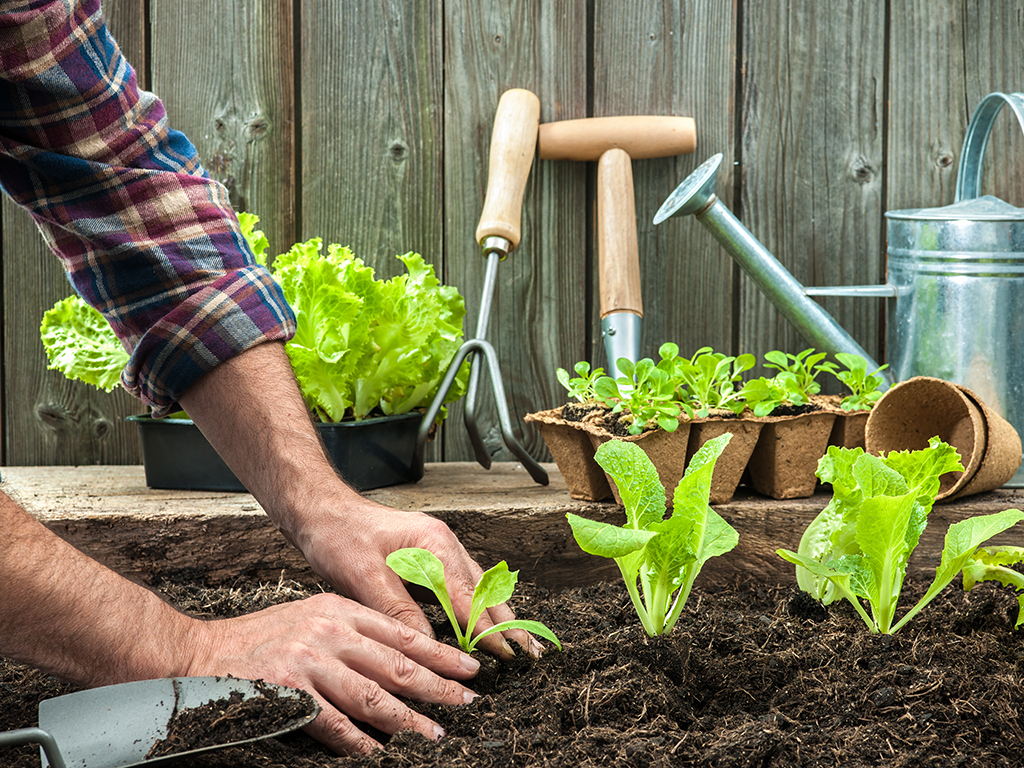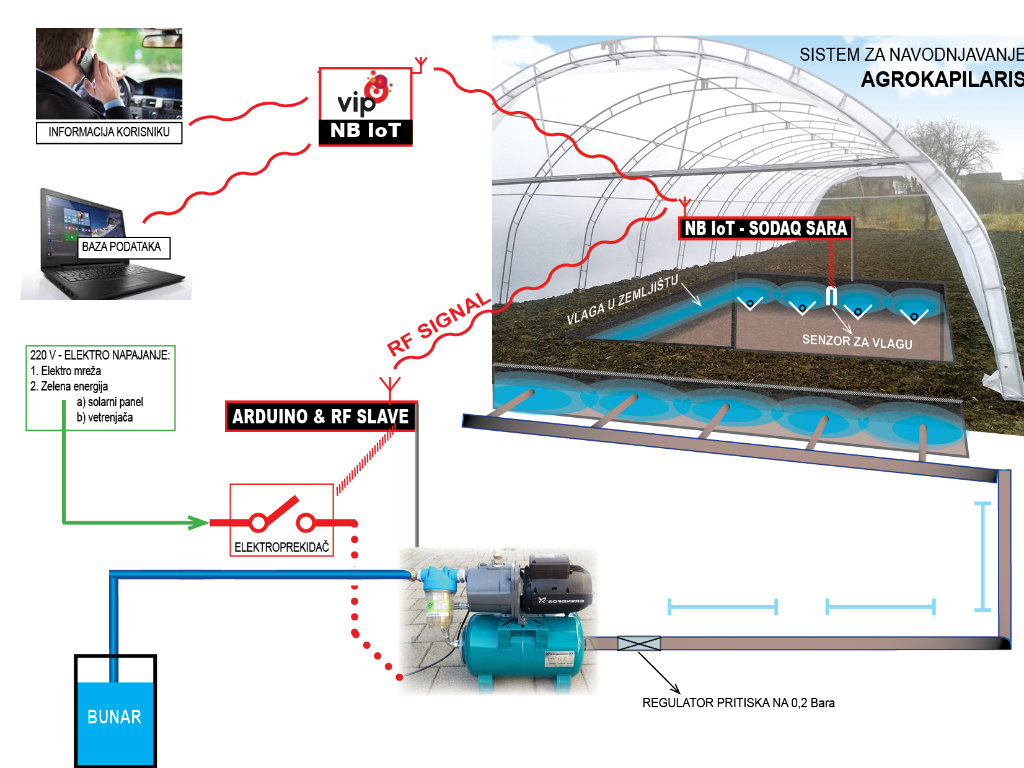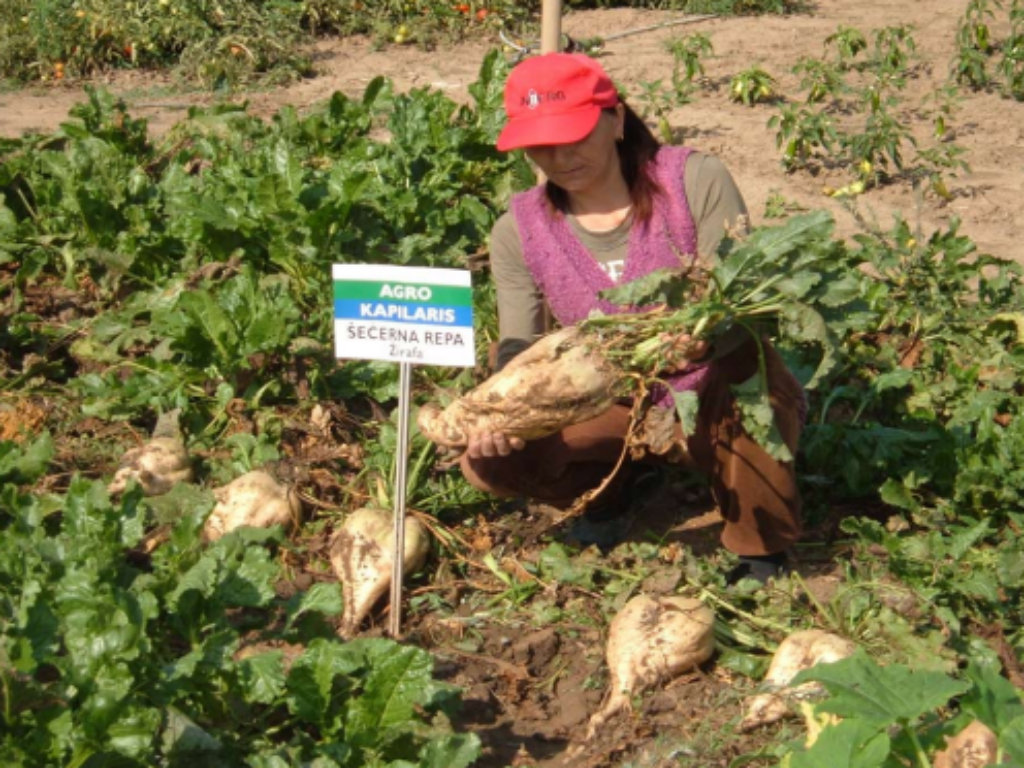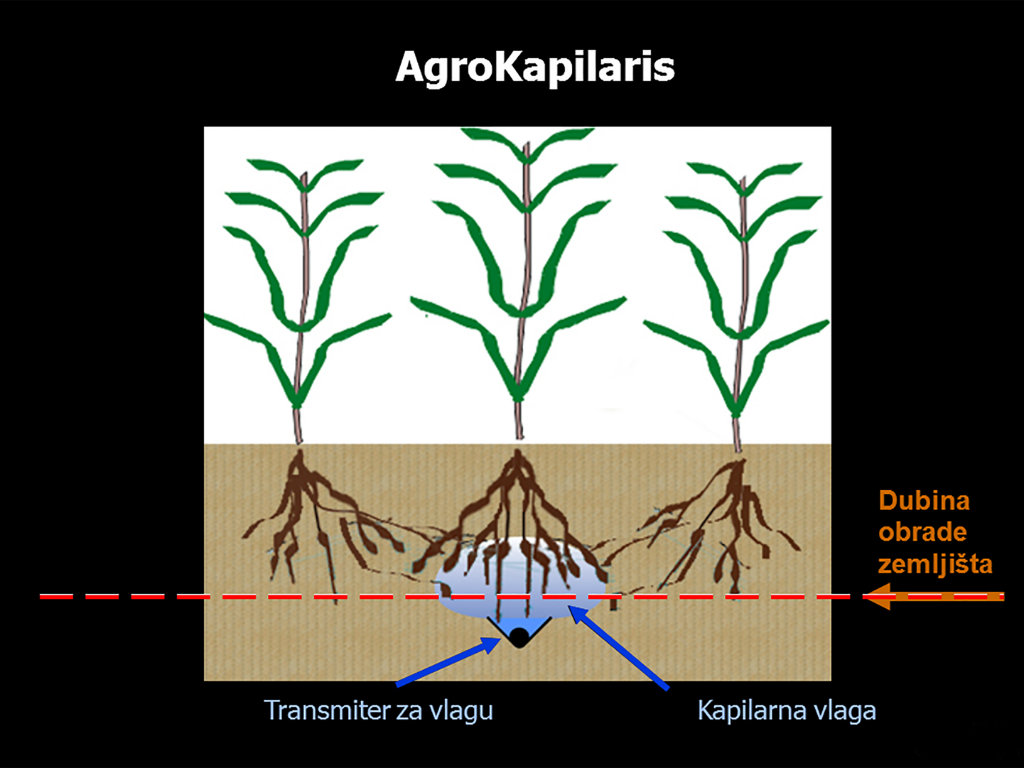AgroKapilaris, revolutionary irrigation system from Boljevci – Support from banks and Ministry of Agriculture needed to put the product on the market
 Tuesday, 02.07.2019.
Tuesday, 02.07.2019.
 11:12
11:12

However, the existing systems are no longer as efficient as they used to be, as global climate change, bringing extreme droughts, reduces the effect of surface irrigation, and those effects can also be counter-productive at long-term high temperatures, which sometimes exceed 38 degrees Celsius.
All these issues were considered by Zdenko Zloh, a graphic designer and an agricultural engineer who specializes in soil improvement. As he says, his previous knowledge about these issues and his creativity helped him come up with a solution to the climate change-related problems and the lack of water for food production in the 21st century. The solution is unique and has been tested through years of experimenting.
– I called this unique concept in the world AgroKapilaris. The theory has been tested in practice on the model which was established in 2001. The first institutional support was provided in 2009 by Professor Dragan Rudic, at the time the director of the Institute for Soil Improvement at the Faculty of Agriculture in Zemun. Unfortunately, after he retired, the support ended. In 2010, the Institute for Soil from Topcider joined us in monitoring the result, thanks to the participation and the great contribution of the expert adviser Miroslav Miladinovic, as did the Institute for Vegetable Crops in Smederevska Palanka and the Institute for Agricultural Economics in Belgrade – Zloh begins his interview with eKapija.

– The optimal distance for field and vegetable crops is 105 to 120 centimeters. This provides plants with optimal moisture in the root system zone throughout the vegetation season. The construction of the transmitters is such that it prevents water from flowing out into deeper soil layers, while enabling upwards and lateral capillary rising of optimal moisture. An ellipse-shaped moist front can be seen on the cross section of the moisture transmitter, which is supplied with water from the formed underground canal made of plastic foil – the author of the system explains.
The results are apparent at the experimental parcel in Boljevci in the Belgrade municipality of Surcin, on the cultures of soybean, sugar beet, sunflower, corn, tomato and pepper. Unexpectedly good results were made in 2012, a year characterized by extreme droughts.
– The yields of industrial tomato were around 50% higher. For soybean, the average result was an incredible 6.9 t/ha in the AgroKapilaris system, whereas, in the regular irrigation system, it was 5.4 t/ha. This means that the yields are around 25% greater. Sugar beet yields were also considerably larger. Comparing the results, AgroKapilaris made for around five tons of sugar more per hectare – Zloh says and adds that experiments for application to fruit are in progress.

One of the main advantages of this system is that it saves energy and water. Compared to irrigation by Typhoon machines, up to 30 times more energy is saved, and irrigation through the AgroKapilaris system requires half the amount of water spent for regular irrigation.
– Compared to the drop-by-drop system, the difference is considerable. Dripping hoses with the exploitation period of 10 years have been set up for the purpose of sub-soil irrigation in the past thirty years. The exploitation period of the AgroKapilaris system is seven times longer, thanks to the fact that there are no drippers, so there are no elements which can be obstructed. Compared to one-year dripping devices, the exploitation period is 70 times longer – Zloh notes.
It`s especially important to emphasize that, in protected areas where AgroKapilaris is used, the relative humidity is at a very high level. There is therefore a very low risk of the plants developing diseases.
– If there are no diseases, there`s no need for chemical protection. This means that AgroKapilaris is an ecological product in the field of safe food production – eKapija`s interviewee notes.
In August 2018, the first AgroKapilaris pilot system was installed in Smederevska Palanka, in a plastic greenhouse the size of 4 ares. The results with string beans were impressive, and this year they planted red pepper.
– There is no market product at the moment. We have started talks with a bank, whereby they would follow our programs of innovative technologies. If a commercial bank accepts this program, and the Ministry of Agriculture supports it, our agriculturists will have the opportunity to buy our AgroKapilaris system in the near future – Zdenko Zloh believes.

Globally, according to FAO data, an area of around 300,000,000 ha is irrigated. Of this, 94% is surface irrigation, and other types of irrigation account for the remaining 6%. Subsoil irrigation accounts for a very small percentage, due to the problem of clogging, so the author of the AgroKapilaris system believes that this is the only system of its kind that is sustainable in the long term.
Zdenko designs and does experiments, so he hasn`t had time for serious agricultural production. However, he is to make a step towards it next year, when he plans to start producing red pepper on an area of 1 to 1.5 hectares.
– The idea is for the pepper to be sold as roasted pepper for urban households. I`ve been testing another innovation for several years now, a pepper roasting device, for which I`ve applied for a patent – our interviewee says.
Aleksandra Kekic
Most Important News
06.04.2024. | Agriculture
Preconditions for Placement of Fresh Blueberries and Dried Plums in Chinese Market Secured

16.04.2024. | News
Jovan Ciric, Leasing Director Retail MPC Properties – MPC Echo symbolizes our desire for good ideas and innovative endeavors to spread freely and bring about positive changes

16.04.2024. | News
10.04.2024. | Finance, IT, Telecommunications, Tourism, Sports, Culture
Creative Industry – What This Serbian Economy Sector Worth EUR 2 Billion Encompasses

10.04.2024. | Finance, IT, Telecommunications, Tourism, Sports, Culture
18.04.2024. | Industry, Finance
Here come the new hunters for Serbian gold – Australian Strickland Metals buys mining project on mountain Rogozna

18.04.2024. | Industry, Finance
16.04.2024. | News
Economy Fair in Mostar opens – 26 companies from Serbia exhibiting

16.04.2024. | News
18.04.2024. | Transport
Jovanovic: Purchase of Siemens trams produced in Kragujevac for GSP Beograd should be considered

18.04.2024. | Transport


 Izdanje Srbija
Izdanje Srbija Serbische Ausgabe
Serbische Ausgabe Izdanje BiH
Izdanje BiH Izdanje Crna Gora
Izdanje Crna Gora


 News
News







